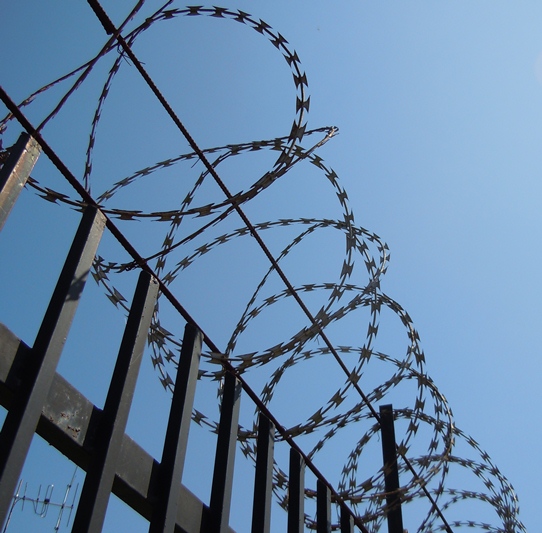LANDSLIDE: There’s no other way to put it really when you look at the results. The National League for Democracy wiped the floor with the Union Solidarity and Development Party in Myanmar’s April 1 by-elections, not to mention the 15 other parties and handful of independent candidates that contested the vote.
The size of the NLD’s win is likely to have a significant impact on the political landscape over and above the 43 seats the party picked up. It sets the scene for an important showdown in 2015 and puts pressure on the USDP – and to a lesser extent ethnic political parties – to respond and shore up its support.
While anecdotal reports had indicated that the NLD had won its 43 seats convincingly, full results published in Myanmar-language state media earlier this month show just how one-sided the April 1 vote was.
The NLD received 2.686 million, or about 65.6 percent, of the 4.092 million eligible votes cast, while the USDP received 1.123 million, or 27.5 percent. That’s a huge gap, and it only gets wider when you take out the Amyotha Hluttaw constituency that the NLD didn’t contest.
I was particularly surprised that the by-elections turnout was only 68.19 percent – significantly lower than in 2010 – despite what I perceived to be relatively high awareness and interest in the vote. This raises some questions: What proportion of non-voters made a conscious decision not to vote in 2012? What would their reasons for not voting have been? To what extent, if at all, was the 2010 turnout of about 77.6 percent skewed by fraudulent advance votes?
Advance votes made up only 3.31 percent of all votes in the by-elections and this is likely to have been a factor in the lower turnout. (While I can’t find the precise figure for 2010, I believe it was above 10 percent.) In many constituencies the NLD got about the same or only slightly fewer advance votes than the USDP and there were reports of the election rejecting applications to vote in advance. This contrasts sharply with 2010, when many government-friendly companies, state-owned enterprises and government departments voted in advance en masse. This process took place with little oversight and overwhelmingly benefited the USDP.
Problems with the electoral rolls were much more pronounced during the by-elections and would have affected turnout to some degree. Only a small fraction of cases are likely to have been documented so it’s impossible know how many of those eligible were unable to cast a vote but based on what I have heard – of whole villages, and thousands of residents of a single ward, being left off the roll – it could have been several hundred thousand.
Another possibility floated by the NLD representative for Mayangone is that some who voted for the USDP in 2010 – presumably public servants – chose not to vote in the by-elections. While they felt unable to vote for the NLD, they did not want to harm the party’s chances of winning, she said. While this seems unlikely to have been a major factor, it would also help explain the dramatic drop in the USDP vote, which fell by more than half on average. (In 2010, the party received about 58 percent of all votes.)
Since the by-elections I have pondered where the NLD votes came from, and where the USDP votes went. I find it hard to believe that it can be simply be put down to many of those who voted for the USDP in 2010 switching to the NLD in 2012. If they were closet NLD supporters – or at least Daw Aung San Suu Kyi supporters – are they really likely to have voted for the pro-military party? Wouldn’t they instead have backed one of the many alternatives, such as the National Democratic Force? If they were ideologically opposed to voting for the NLD breakaway group, I doubt they would have voted USDP instead; more likely, they would not have voted at all.
Certainly, though, a significant number of voters must have made this switch. I heard this was common among those who felt unable to vote against the USDP in 2010, such as family members of civil servants, and I imagine those coerced into voting USDP – through the provision of low-interest loans, for example – will have felt little compunction not backing the USDP again.
But I think there were other factors at play here. It was clear that the NLD picked up a large number of votes from the USDP’s main opponents in 2010; almost all other candidates struggled, collectively attracting just 7 percent of the overall vote. In Mandalay’s Maha Aung Myay, for example, there were eight candidates but U Ohn Kyaing from the NLD got almost 90 percent of votes.
Another question to ponder is what proportion of the approximately 23 percent who did not vote in 2010 voted in 2012? Given the absence of exit polling, we’ll never know for sure but based on anecdotal evidence I would say it was a large number and they almost exclusively voted NLD.
This would create another voting bloc – those who voted in 2010, probably for the USDP, but not in 2012 – and one that seems to support the Mayangone NLD representative’s argument to an extent. How this group votes in 2015 – assuming they do – could have a significant impact on the result of that election. It’s not hard to imagine them being persuaded to vote for the USDP again if needed.
The result also shows up a misperception about 2010 that applies to the NLD’s win in 1990 as well. The USDP, while dominant, received about 50 percent
There’s been much discussion in the media about the significance (or not) of the by-elections and the result. One correspondent for a British television network proclaimed, almost in the same sentence, that the result was a blow for the government but that the NLD would be able to do little until the next general election in 2015. I’m sure that the government as a whole would not have been displeased with the election result and, more specifically, the glowing international response it garnered. The fact that the by-elections were unofficially postponed from October/November 2011 until after the NLD had decided whether to contest is indicative of the fact the government wanted the party, and in particular Daw Aung San Suu Kyi, in the political arena, rather than on the sidelines.
Now the NLD is very much in and there’s a fair chance that, provided they are pragmatic in how they attempt to implement their political agenda, the party’s victorious candidates will be able to work together with other parliamentarians, whether they are from “opposition” groups like the National Democratic Force, ethnic parties, the USDP or even the military. Daw Aung San Suu Kyi and her colleagues are likely to find quite a lot of common ground, particularly on their short-term priorities, such as improving provision of health and education services. The key will be to first pursue those goals that more closely align with the government’s: For example, participating in peace negotiations rather than immediately pushing for amendments to the constitution to get the military out of parliament. This will not only generate results but also reduce the risk of the NLD being seen as a danger to national stability and all the potential consequences that entails. However, the refusal to take their seats in parliament until the oath is amended indicates the NLD may not yet have adopted pragmatism over principle as much as it needs to.
A few days after the by-elections, English-language weekly The Myanmar Times published a photo on its front page of a pickup bus in Kawhmu township laden with about 50 NLD supporters and the headline, “On the road to 2015”. It might seem a little premature to be talking about an election that’s still more than three years away, particularly given the changes of the past 12 months. But while the by-elections were held to fill seats vacated shortly after the 2010 election, they are more of a prologue to 2015 than an epilogue to November 2010. I say this primarily because, with the NLD involved, these by-elections will share many more similarities with and the next general election than the previous one.
The importance of 2015 for Myanmar’s future cannot be overstated; it will shape the country’s direction far more than 2010, which was essentially a military exercise to bring about a transfer of power to a non-threatening but mostly civilian government. Post-2015, Myanmar could be looking at a radically different political environment, with so-called democratic and ethnic parties holding a majority in the national legislature.
A major question now is which of the different groups with a shot at victory can best position themselves for success. Can the USDP rebuild its support base (assuming it ever really had one)? Will ethnic parties be able to compete with the NLD?
An NLD win is certainly not assured. In fact, I’d be surprised if we saw a landslide on the scale of the by-elections in ethnic Burmese areas, let alone ethnic minority regions. An element of the party’s success on April 1 was simply voters enjoying the opportunity to vote for a person and a party that had been, until recently, on the sidelines of the political process. The campaign was also based around the personality of the party’s Nobel Prize-winning leader; many NLD candidates campaigned with the slogan that a vote for them was a vote for Daw Aung San Suu Kyi. Given she will be 70 in November 2015, it’s not clear how long she can remain at the helm of the party. Much has also been made of the fact Daw Aung San Suu Kyi is attempting to make the potentially tricky transition from icon to politician. Similarly, the party as a whole is shifting from an extremely polarised political environment, in which the two sides were very easy to delineate, to a much more complex scenario where success will depend on cooperation as much as confrontation.
Should Daw Aung San Suu Kyi and the party’s representatives struggle to make inroads in the parliament – another feature of the campaign was the NLD’s lofty, perhaps unattainable goals – the election in 2015 may not be as straightforward as the by-elections. Conversely, given its minority status, anything the party achieves through the parliament can equally be claimed by the USDP.
Yet the USDP at the moment seems almost a toxic brand. Rebuilding its support to anything approaching 2010 levels will require either a great deal of coercion or a complete overhaul of the party’s image, culture and operations. I suspect this may be beyond the capabilities of its current leaders. At the same time, it has failed to recruit or attract talented younger members to take over from some of the geriatrics in Nay Pyi Taw; on one political “capacity-building” trip to Japan for members of political parties, the USDP stayed true to form by mostly sending the children of senior party officials.
“At a personal level they [conservatives in the USDP] know if we don’t reform ourselves, then we will hand the NLD or others a sweeping victory in 2015,” one government adviser told Financial Times last week.
Expect to see a significant degree of tension within the USDP over the next three years – and not only at the top. Many of its more able parliamentarians simply ran on the USDP ticket because they realised it would guarantee a seat in the hluttaw. Will they stick around if the party fails to rebuild by 2015 and defeat looms on the horizon? Perhaps not. I don’t foresee a major split, however; most members would be all too aware of the possible consequences should the military perceive that the USDP is falling apart.
Finally, the by-elections gave little indication of how ethnic parties will fare in 2015, other than that they can expect a strong challenge from the NLD. Three “ethnic” constituencies were contested, with the Shan Nationalities Democratic Party winning an upper house seat in northern Shan State that included Lashio township, and the NLD taking Kalaw and Mawlamyine. The first of these merits closer attention. Of the five townships in the constituency, the NLD easily won Lashio, which is mostly urban, the USDP won Kunlong, a military town, and the SNDP was victorious in three more rural constituencies. Ethnic parties it seems will remain strong in ethnically homogenous rural areas, while the NLD and USDP will lead the way in urban constituencies. Results could also vary depending on the state; the NLD can expect tougher opposition in Kachin State (provided there is a strong ethnic Kachin party involved), Rakhine State and much of Shan State.
Independent analyst Richard Horsey said the result could usher in “a more polarised political space in the lead-up to 2015, and possibly for more confrontational politics, as key sectors of Myanmar society – the conservative political elite, ethnic parties, and non-NLD democrats – see the risk of marginalisation”.
For the USDP, the size of the loss “raises serious questions about what core group of supporters the USDP can rely on, and about its electability in the next general elections due in 2015”, he said.
“How the USDP will position itself going forward will depend in part on which of the various factions in the party will gain the ascendency following its poor showing in the polls. If the hardliners (who also have considerable financial muscle) do so, the party may start to position itself more aggressively – perhaps with the kind of corrupt populism adopted by some other parties in the region. Alternatively, a more moderate faction may use the by-election results to push for a fundamental reorganisation and reorientation of the party. If the USDP is unable to formulate a credible plan for success in 2015, many of its strongest candidates may leave the party.”
As with everything in Myanmar, it’s difficult to speculate with any sense of conviction. There is a real risk of a coup. If there is one thing the election showed, it is that politics remains dangerously personalised; too much is reliant on the understanding between President U Thein Sein and Daw Aung San Suu Kyi, as well as Pyithu Hluttaw Thura U Shwe Mann.
If this relationship wavers — and, as we’ve seen in recent days, obstacles can appear in relatively unlikely places — Myanmar’s political future will be more opaque than ever.
Kyaw Kyaw is a Yangon-based writer.
 Facebook
Facebook  Twitter
Twitter  Soundcloud
Soundcloud  Youtube
Youtube  Rss
Rss 